

5 Effective Ways To Get Your Customer To Provide Feedback
Every business has customers, so every business needs to collect feedback from those customers. Delving into your data and analytics will get you so far, but to really understand your customers’ needs and behavior, you need to gather feedback.
Collecting customer feedback is a great way to gain qualitative and quantitative information on your products, customer service and generally how well your business is fulfilling customer needs. It tells you what you’re doing right and wrong – right from the horse’s mouth.
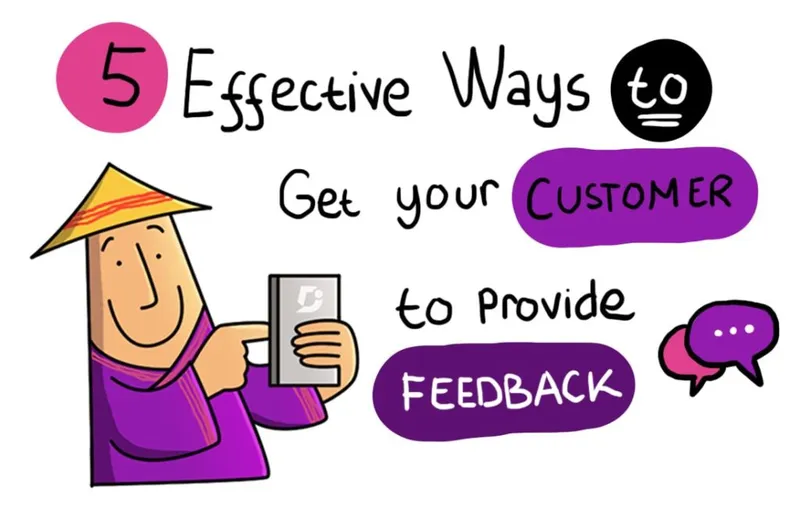
Feedback is critical for large businesses
Customer feedback is especially vital for medium-to-large organisations. Smaller businesses have the benefit of more face-to-face contact with their customers on a regular basis. But larger organisations don’t always have this relationship with their customers. More effort is needed, therefore, to connect with customers and gather feedback.
Large organisations also have more to lose if they aren’t satisfying customer needs. Gathering feedback is an effective way to stop disgruntled customers heading for the door.
The benefits of gathering feedback
Collecting feedback from your customers offers many benefits. Positive feedback can be a boost for employees and can be used in recognition schemes. It can be used in case studies, to enter awards and to provide customer testimonials. Feedback can inform future campaigns or product development (through replicating what works and improving what didn’t).
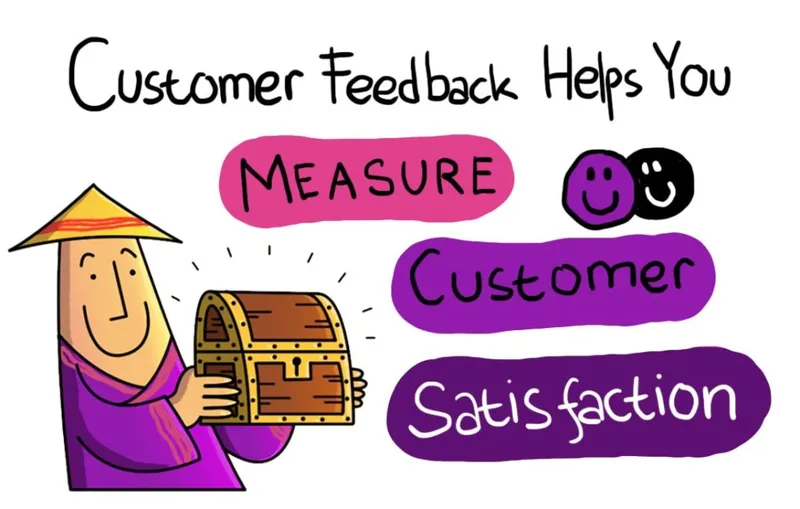
Negative feedback will identify any problems that your customers may not have mentioned. Often, slight niggles will frustrate customers and tempt them to go elsewhere. Resolving these issues will potentially stop them from leaving in the future.
The insights obtained through collecting feedback can improve every aspect of your business. From product development to sales strategy, marketing activities and customer service.
Though customers may be invested in businesses that they are engaged with, they sometimes need a little convincing to spend time giving you feedback. A study by SurveyMonkey found that consumers typically respond to requests for three reasons: they want to be helpful, they enjoy the topic or there’s some kind of incentive for them.
So, what’s an effective way to gather customer feedback? Here are five ways to encourage your customers to provide feedback.
1. Make it easy
When inviting a customer to offer feedback, make it as easy as possible for them. A great opportunity to gather feedback is when a customer is already engaging with your business. They have already received a service, information or purchased from you. So, they may feel more open to giving back to your business through a review and rating.
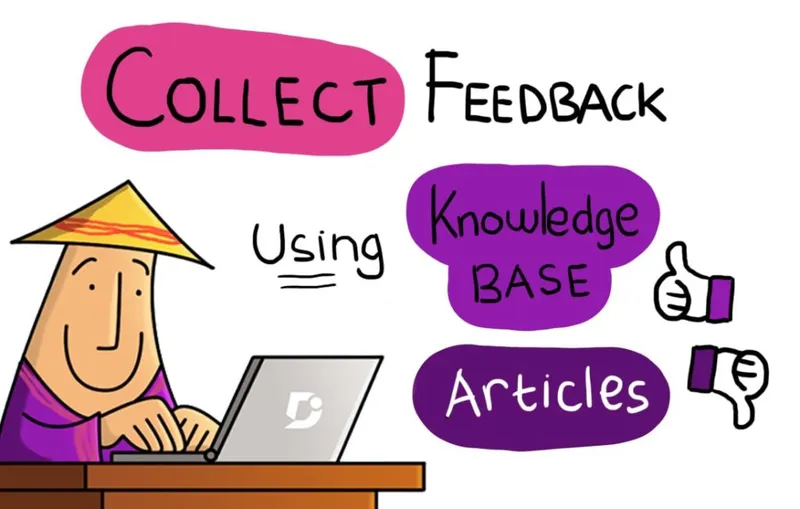
This could be as simple as a few post-purchase questions on an order confirmation page, to a thumbs-up or down on a knowledge base article. Live chat on a website is another potential medium, along with a dedicated email address ([email protected], for example).
Customers usually interact with businesses in many different ways. Having a range of feedback channels, such as email, in-store and on social media, can encourage more interaction. People can choose how and when they feedback to you. However, make sure you have enough resources to monitor all of your feedback channels – nobody wants to feel ignored!
Skype’s post-call survey is a good example of a simple feedback gathering tool. It launches as soon as a call finishes, with just one question for customers to answer. In rating the quality of the call, Skype gets vital information on its product’s performance and can infer how satisfied its customers are.
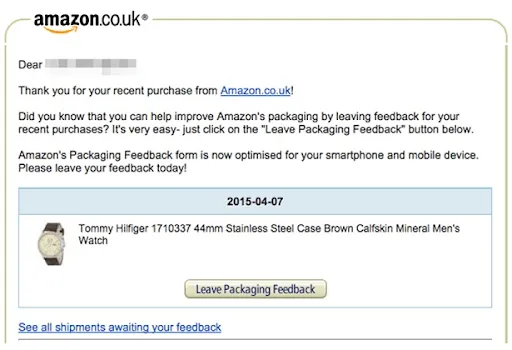
Skype’s survey highlights another key tactic used by leading companies to gather feedback: putting questions where customers are likely to be. If your customer spends a lot of their time on social media, use a quick Twitter or Facebook poll. If they often communicate via email, then request feedback there. For businesses with a physical premise, having a survey on a tablet or card machine can obtain customer information as they browse or purchase in-store.
Avoid any mediums that your customers don’t use or like. Millennials are well-known for hating phone calls, with 75% of adults stating that they never answer phone calls on their smartphones.
It’s also worth telling people how much time they’ll spend filling out a survey. If it’s a quick 5-minute form that they can fill out on their phone or during their lunch break, they’ll be more likely to complete it.
2. Incentivise
Offering a perk for completing a survey is a tried-and-tested technique. Responses increase by 10-15%when an incentive is offered. Of course, the benefit should be something that your customers would appreciate. For some, that will be a prize draw for the latest piece of tech. Others may respond for a free month’s subscription to your product or service. Discounts or exclusive deals also work well. Or, for a charitable spin, offer a donation to a charity of their choice. Whatever tactic you use, make sure it invokes that FOMO (fear of missing out) to encourage people to take part.
You should also consider your employees. How can they convince people to give feedback? Incentives can encourage them to gather feedback. Cashiers could collect information at point-of-sale, for example, or an account manager could request feedback at a weekly client meeting. Have a ‘Feedback Champion of the Month’ award and offer a sweet treat, gift cards, experience days or extra days off for the employee who collects the most responses.
3. Make it personal
Tying in closely with this is personalising your requests. Where appropriate, reach out directly. If you have a customer success or account team who deals regularly with a client, get them to request feedback on a call or via email. For higher-value customers, they could even meet in-person for an informal chat over lunch or coffee. However, there is a thin line to tread between being personal and putting someone on-the-spot.
Personalised emails and social media messages can also work. Amazon often does this, personalising the request with details of what they ordered.
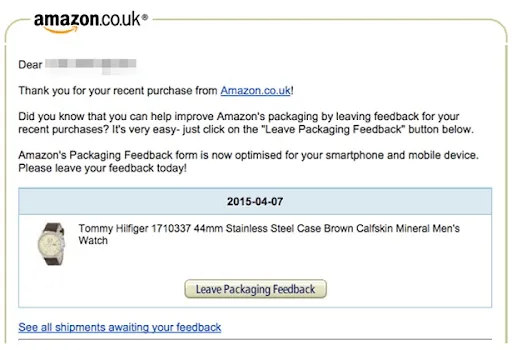
4. Build in processes
The most effective feedback programmes are planned. This rings especially true for SaaS products which are used recurrently. Have a clear feedback process that your customers are informed about. That way, they can report any issues or bugs whenever they occur. They will also anticipate regular feedback requests.
You can set your feedback schedule to collect information every quarter, annually or at the end of milestones (such as customer on-boarding). Just make sure you pick a time and stick to it.
Most SaaS companies can also see when a customer suddenly stops using their product. If this happens, a customer feedback request could help uncover why.
Former VP of Customer Experience for HP Maurice Fitzgerald recommends setting your feedback request frequency based on what you hope to achieve from it. When aiming to improve a product, he suggests contacting customers at two different times: when they have unboxed your product and 6 months into using it. He adds, “If yours is a technology product, I suggest sending the survey request or phoning the customer within 48 hours of delivery.”
For relationship and brand surveys, Fitzgerald states that, “Twice a year is a good frequency for your most important customer relationships and may work best for your brand surveys.”
5. Show your customers that you’ve listened
Telling your customers how previous feedback has been used is a good way to encourage participation. It will show how much you valued their time and feedback. Also include how their feedback will be used. Amazon does this well by tailoring feedback to its products, marketplace offerings and packaging. It divvys up different parts of its operations into small, quick surveys to make it more likely that people will respond. Telling them how their contribution helps the company adds another reason.
Hilton Hotels regularly shares the results of customer feedback. Some customers even receive a phone call follow-up from the manager of the hotel that they stayed in. Real-time data is fed back directly to each hotel manager. They can compare the day’s performance with the day or weeks before. By telling its customers how their input has been valued, Hilton’s response rate has grown by 30%. Its survey abandonment rate has dropped by 6%.

Key takeaways
When developing your feedback scheme, remember that one size doesn’t fit all. What might suit one company and its customers, may not work for you. Constantly test and refine your approach to boost your feedback rates.
Acting on any feedback gathered is essential. You cannot gain value from it if isn’t acted on. Promote positive feedback through social media, case studies and awards. Act on any negative feedback to improve your products and service.
Finally, any interaction with your customers has to make them feel important. Make sure this shines through in your customer feedback approach. Show you care and your customers will flock to your feedback forms.






